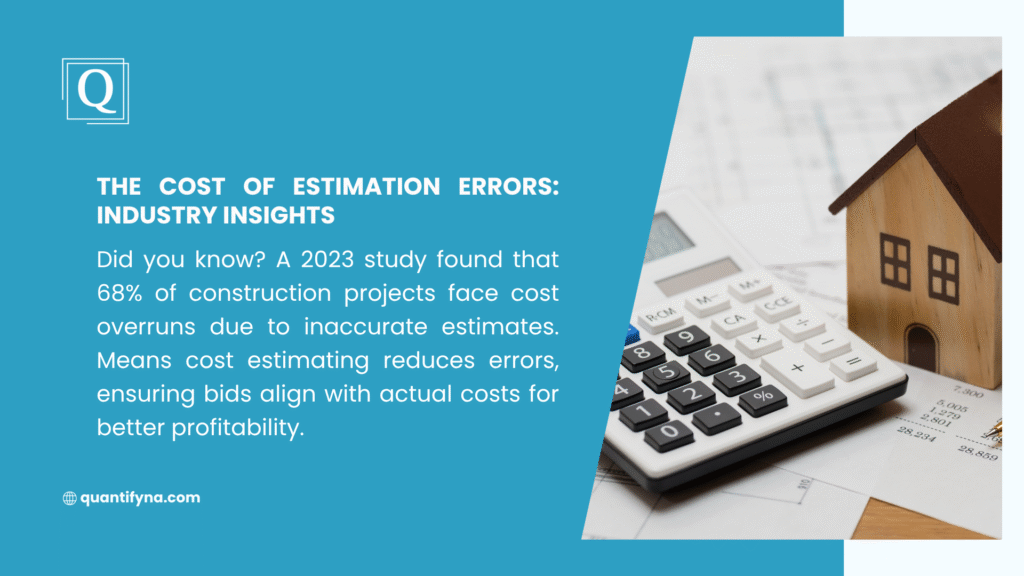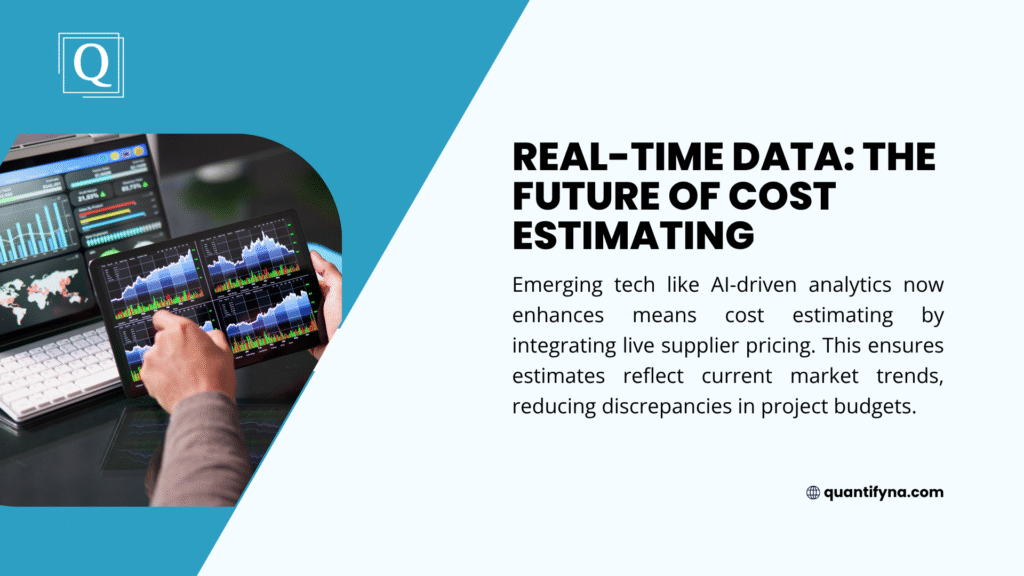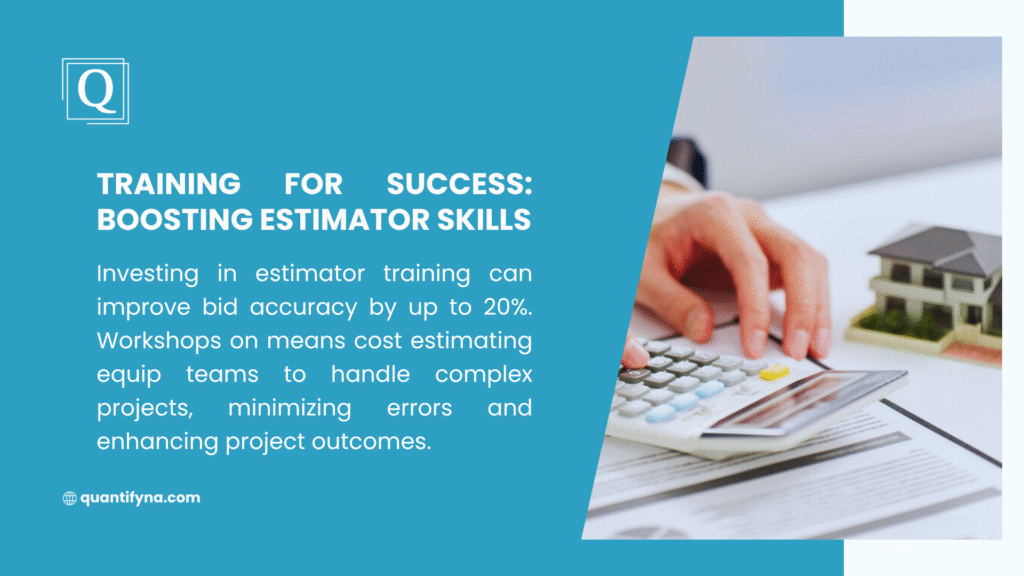Anyone who’s been in construction for more than five minutes knows that cost estimating errors gets mentioned constantly in industry conversations. Yet, many contractors still aren’t entirely clear on what this approach actually involves or why it matters for their bottom line.
The truth is, cost estimating represents more than just another industry buzzword. It’s a proven methodology that helps construction professionals develop accurate project costs without the usual guesswork and finger-crossing that comes with traditional estimation methods.
Cost Estimating Errors Without the Technical Jargon
Cost estimating works like a comprehensive reference system for construction costs. Instead of relying on rough guesses or outdated pricing from last year’s jobs, this approach provides access to standardized cost databases filled with real-world pricing information.
These databases contain detailed cost breakdowns for materials, labor rates, equipment expenses, and all those hidden costs that can surprise contractors when they’re not properly accounted for. The system organizes this information in ways that make practical sense for actual construction projects.
Many contractors find that using standardized cost data dramatically improves their drywall cost calculations, since they can see exactly what materials and labor should cost in their specific market area, plus all the additional factors that impact final pricing.
How This Approach Works in Practical Applications
Consider a typical scenario where a contractor needs to prepare flooring estimating for an upcoming project. Rather than spending hours calling suppliers for quotes that may or may not reflect actual job costs, standardized cost databases provide immediate access to current material pricing, typical installation timeframes, and expected labor rates.
This system goes beyond simple price lookups. It breaks down every cost component so contractors can understand exactly where their money goes and identify potential problem areas before they become expensive surprises.
Breaking Down the Cost Components

The real strength of cost estimating lies in its comprehensive approach to cost analysis. When calculating labor cost to hang and finish drywall, the system considers not just hourly wages but also productivity factors, regional wage variations, and job-specific conditions that affect completion times.
This detailed analysis helps contractors understand whether their current pricing aligns with market standards and identify areas where costs might be higher or lower than expected based on local conditions.
The approach also accounts for variables that traditional estimating methods often overlook, such as waste factors, delivery costs, equipment downtime, and other real-world factors that impact project profitability.
Common Applications Across Construction Trades
Here are the common applications across construction trades.
General Construction Projects
Most construction companies find cost estimating particularly valuable for their standard construction estimating work. When bidding multiple projects regularly, having consistent access to reliable cost data can make the difference between profitable contracts and financial losses.
The methodology works especially well for repetitive tasks that contractors perform frequently. Common applications like drywall estimating become more predictable when backed by solid cost data rather than trying to remember pricing from previous jobs completed months earlier.
Specialized Trade Work
Specialty contractors often find this approach particularly helpful when explaining cost variations to customers. For instance, when discussing carpet cost per square foot with clients, having standardized cost breakdowns makes it easier to explain why different installation methods result in different pricing.
The same principle applies whether dealing with hardwood cost per square foot calculations or helping customers understand cost differences when comparing carpet vs hardwood cost options. Standardized data provides objective foundations for pricing recommendations.
Painting and Finishing Operations
Painting estimating represents one area where contractors frequently underestimate costs, particularly regarding surface preparation requirements. Cost estimating addresses this challenge by providing detailed breakdowns that account for prep work, material coverage rates, and application time requirements.
This comprehensive approach helps prevent the common problem of underbidding paint projects due to inadequate consideration of preparation time and material requirements.
Comparing Different Estimation Approaches
| Estimation Method | Accuracy Level | Time Investment | Information Required | Best Applications |
| Cost Estimating | High reliability | Moderate time required | Comprehensive databases | Detailed project estimates |
| Top-down estimating | General accuracy | Minimal time | Basic project info | Preliminary budgeting |
| Bottom-up estimating | Very precise | Extensive time | Complete project details | Complex, high-value projects |
| Analogous estimating | Variable accuracy | Quick process | Historical project data | Similar project types |
Cost estimating strikes an effective balance between accuracy and efficiency, providing reliable cost information without requiring excessive time investment for each estimate.
Integration with Current Technology Solutions
You can integrate cost estimating with other solutions.

Modern Software Applications
Contemporary construction estimation increasingly relies on digital platforms that incorporate cost estimating principles. These software solutions combine traditional cost databases with current market information, creating dynamic estimation environments that adapt to changing economic conditions.
Professional estimators use these integrated tools to develop construction takeoff documents and detailed cost analyses that reflect current market realities. This integration reduces estimation time while improving accuracy compared to manual calculation methods.
Maintaining Data Accuracy
Success with cost estimating depends heavily on keeping cost information current and relevant. Construction material prices and labor rates fluctuate regularly, and outdated information can lead to significant estimation errors.
Effective systems update their cost databases frequently, but contractors still need to monitor local market conditions and adjust standardized costs when regional factors create significant variations from published averages.
Addressing Real-World Implementation Challenges
There are some implementation challenges that might come up.
Market Variation Considerations
One common challenge involves situations where standardized costs don’t match local market conditions. Regional labor shortages, material supply issues, or major construction projects in the area can create cost variations that standard databases don’t reflect.
Experienced estimators learn to recognize these situations and make appropriate adjustments to standardized cost data. This skill develops over time through careful tracking of actual project costs compared to estimated expenses.
Project-Specific Factors
Every construction project has unique characteristics that may require modifications to standard cost assumptions. Site access issues, schedule constraints, or special material requirements can significantly impact costs beyond what standardized data typically covers.
For example, when comparing hardwood vs laminate cost options, standard pricing might not account for subfloor conditions, moisture issues, or access limitations that could affect installation complexity and timing.
Emerging Technology Trends
Even though there are challenges, there are also new trends that are emerging.
Building Information Modeling Integration
The construction industry is beginning to see integration between cost estimating and Building Information Modeling (BIM) systems. This combination allows for automatic quantity takeoffs combined with current cost data, creating more efficient and accurate estimation processes.
While still developing, this technology shows promise for reducing estimation time while maintaining or improving accuracy levels, particularly for standard construction activities.
Enhanced Data Sources
Modern cost estimating systems are beginning to incorporate real-time pricing information from local suppliers and subcontractors, addressing one of the traditional limitations of standardized cost databases.
This development could significantly improve the accuracy of cost estimating by providing more current and location-specific cost information than traditional regional averages.
Impact on Construction Business Operations
| Business Benefit | Practical Impact | Long-term Results |
| Improved bid accuracy | More competitive and profitable pricing | Higher win rates on desirable projects |
| Standardized processes | Consistent estimation methodology | Better cost tracking and performance analysis |
| Comprehensive cost coverage | Reduced risk of missing cost elements | Fewer project overruns and surprises |
| Market responsiveness | Current cost information | Pricing adjustments before market changes impact profits |
| Efficiency gains | Faster estimate preparation | Capacity to bid more projects or focus on other activities |
Making Sense of the Investment
Cost estimating isn’t a magical solution that eliminates all pricing challenges, but it does provide a solid foundation for more accurate cost projections. Construction businesses operating in competitive markets need every advantage they can get, and reliable cost information represents a significant competitive edge.
Whether handling building estimation for large commercial projects or pricing residential work accurately, access to standardized cost data helps contractors make informed decisions rather than educated guesses.
The key lies in understanding that this represents a tool to support good judgment rather than replace it. Contractors still need to understand their local markets, know their actual costs, and apply experience-based adjustments where appropriate.

When market knowledge combines with reliable cost data, the result is estimation accuracy that contractors can actually depend on. In an industry where thin margins are common and cost overruns can eliminate profits entirely, this reliability becomes extremely valuable.
Smart contractors recognize that investing time in better estimation methods pays dividends through improved project profitability and reduced financial risk. The construction business presents enough challenges without adding unnecessary uncertainty about project costs.
Professional cost estimation requires systematic approaches that combine industry knowledge with current market information. Cost estimating provides exactly this combination through comprehensive databases, proven methodologies, and standardized procedures that support accurate project cost development.
Understanding these principles and implementing them effectively can significantly improve both estimation accuracy and overall project profitability. The investment in proper training, current data sources, and quality control processes typically pays for itself through better project outcomes and reduced financial exposure.
Ready to Stop Worrying About Your Estimates?
Accurate cost estimation shouldn’t keep contractors awake at night wondering if their numbers are right. At Quantify, professional estimating services combine industry expertise with proven methodologies that deliver reliable results contractors can trust.
The team understands construction challenges because they’ve faced them firsthand. Services include detailed takeoffs, comprehensive cost analysis, and specialized trade estimates – all designed to help contractors win more profitable work.Stop leaving money on the table with inaccurate estimates. Professional estimating services provide the competitive advantage needed in today’s construction market.




